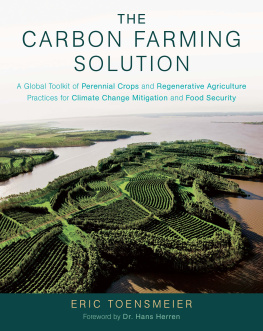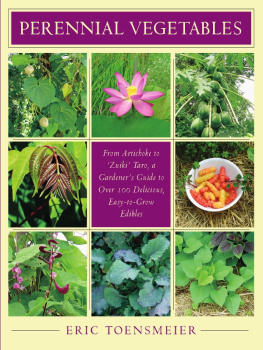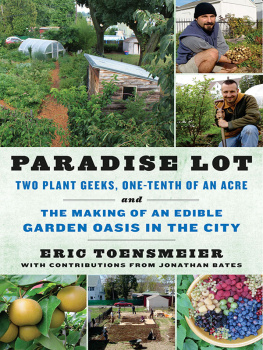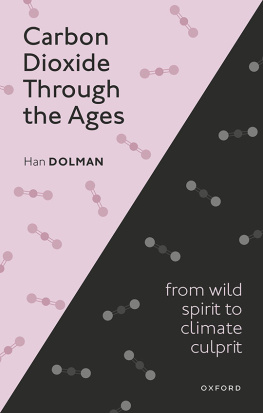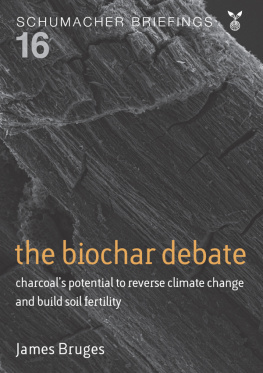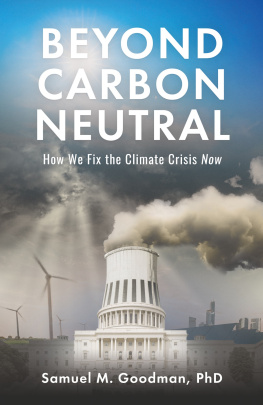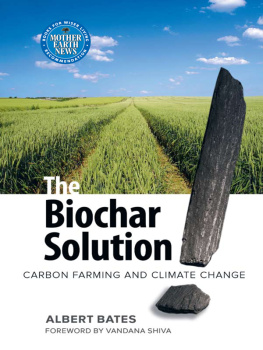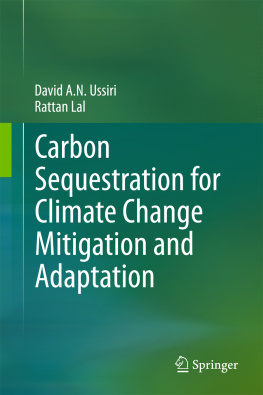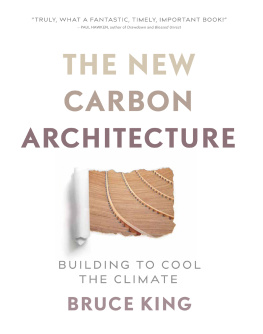Acknowledgments
I n 2008 I read Tim Flannerys Now or Never: Why We Must Act Now to End Climate Change and Create a Sustainable Future . Short and to the point, it was my personal wake-up call around climate change. I also realized that the perennial crops I had spent my adult life investigating (and cultivating) were a very promising potential solution that was not being discussed. I left my job as an urban farm project manager in 2009 to begin this project.
I pursued multiple options for financing the effort. I applied for a fellowship, inquired about a PhD program, submitted article pitches to major magazines, and even got an agent to shop the idea around to book publishers. Those few who even wrote me back were unable to provide the funds required to actually write a book.
The Permaculture Activist magazine gave me the chance to write two articles, one on carbon farming and the other on perennial staple crops. Writing these allowed me to begin a deeper exploration of the concepts. Opportunities to teach at the Carbon Farming Course and keynote the Northeast Organic Farming Association conference gave other venues to explore and communicate these ideas.
I decided to crowdsource the funds with Kickstarter, as I knew that there was strong interest from the public. Elizabeth provided excellent coaching through the process of launching a campaign. Thanks to permaculturenews.org, International Permaculture Day, both thepermaculturepodcast.com and permaculturepodcast.org, permies.com, and Celsias for posting content related to the campaign, as well as everyone who helped on Facebook and YouTube.
Without my Kickstarter backers, you simply would not be reading this book. Im deeply grateful for their support. That goes for those who gave $1 all the way to my $1,000 patrons.
In 2013 I also received word that I was appointed as a lecturer at Yale University, where I will teach my third class on Carbon-Sequestering Multifunctional Agroforestry this fall (2015) in the Masters of Forestry and Environmental Science program. Jonah Adels, who had been my student in a carbon farming course, organized Yale students to bring me there to teach. He died as a result of a car accident on the way home from field research at Badgersett Research Corporation. The Yale course, and this book, are a testament to his vision and organizing ability.
Thank you to those who have blazed the trailparticularly P. K. Nair, Rattan Lal, the Land Institute, and the World Agroforestry Centre. A special appreciation to the team at the Institute for Plant Genetics and Crop Plant Research, whose six-volume, 3,644-page Mansfelds Encyclopedia of Agricultural and Horticultural Crops was my essential plant reference.
For the first time Ive been able to hire research assistants. Their work was extremely helpful. Thank you to Emma Cutler, Connor Stedman, Sarah Tolbert, Shane Feyers, Mary Johnson, and the extremely capable Ruth Metzel, also teaching fellow for my Yale class.
Throughout the process my friend and colleague Rafter Ferguson has challenged me to consider myself a citizen scientist and use the scientific literature as my guide and my standard for this book. He has provided assistance in navigating the world of peer-reviewed articles, constant thoughts on the organization and development of these ideas, and encouragement to teach the controversy where it exists. He also used his impressive gifts for the visual representation of data to help me develop the tables in around which the argument of the book is framed (along with other figures). I was fortunate to have his companionship on the research trips to Cuba and Mexico as well.
Many individuals were gracious enough to answer questions in person or via phone or email. Thanks to Ken Asmus of Oikos Tree Crops; Danny Blank of the Hunger Education and Resource Training Institute (HEART), formerly of Educational Concerns for Hunger Organization (ECHO); Brock Dolman of the Occidental Arts and Ecology Center (OAEC) and the Water Institute; Richard Felger of the University of Arizona herbarium and the Sky Island Alliance; Rob Fetter, formerly of Equitable Origin eco-social petroleum certification; Bart Fredericks of the FACT Foundation; Christine Jones of Amazing Carbon; Neil Logan of Integrated Living Systems Design; Owen Hablutzel of Whole Systems Transformations; Mark Krawczyk, coauthor of the forthcoming Coppice Agroforestry ; Ricardo Romero of Las Caadas; Phil Rutter of Badgersett Research Corporation; Martin Price, founder of the Educational Concerns for Hunger Organization (ECHO); Lincoln Smith of Forested; Rachel Smolker of Biofuel Watch; Rachel Steele of USDA Climate Hubs; Adam Chambers of USDA NRCS; Rattan Lal of the Carbon Management and Sequestration Center; and David Van Tassel of the Land Institute.
Thanks to the many individuals and organizations who provided the photos that so enhance the readability of this book. All are credited. In particular Id like to thank the assemblers of the Flickr image banks of the World Agroforestry Centre and AgForward, and everyone who shares their photography with the world through open source licenses on Flickr and Wikimedia Commons. Thanks as well to the many others who shared excellent photos that I was unable to include for reasons of space.
Many people reviewed drafts and manuscript chapters. Brian Tokar in particular has gone above and beyond the call of duty, offering thoughts, contacts, and reviews from the very beginning of this project. Ricardo Romero reviewed the introduction. Reviewers for part 1 include Anne Toensmeier (chapters 14), Brian Tokar (1), Jonathan Bates (2), Pandora Thomas (2), Craig Hepworth (3 and 4), and Mario Yanez (5). Part 2 reviewers were Rafter Ferguson (7), David Van Tassel (9, 10), Meghan Giroux (610), and Vida Chavez-Garcia (9). Part 3 was reviewed by Craig Hepworth (1117) and David Van Tassel (11, 13, 16). Reviewers for part 4 include Sarah Seitz (1824), Brian Tokar (18), Brad Ward (18), and Chaia Heller (18). Part 5 was reviewed by Diego Angarita (28, 29), Brian Tokar (28), Rick Burnette (26), and Pandora Thomas (29). Thanks to all of them for taking the time from their busy lives to read and offer their thoughts and expertise. Dr. Cheikh Mbow, of the World Agroforestry Centre and IPCC panelist, performed a very helpful review of the entire manuscript and had many useful suggestions.
I have had great experiences working with the team at Chelsea Green. Publisher Margo Baldwin has been on board since the beginning about the need for lots of beautiful photographs. My editor Brianne Goodspeed really understands how to bring out the best in my writing. She has been a critical anchor to this book, helping to frame the structure to best communicate the ideas.
Thanks to all the friends and counselors whose support kept me going at a steady pace. Diego Angarita, Amy Calendrella, Kara Nye, and Daniel Ross have been particularly helpful in this regard.
Thanks also to Marikler and Daniel for allowing me to finish this writing marathon in a 40-day sprint. Im so very lucky to call them my family.
I have surely forgotten to mention some of the many people who have been of assistance in this project. Thanks to all of you and my apologiesif you are not mentioned here your work was no less helpful. Finally, final responsibility for any and all errors lies with me and not my many reviewers, contributors, interviewees, and editors.

Chelsea Green Publishing sees books as tools for effecting cultural change and seeks to empower citizens to participate in reclaiming our global commons and become its impassioned stewards. If you enjoyed The Carbon Farming Solution, please consider these other great books related to agriculture and the environment.
Next page
